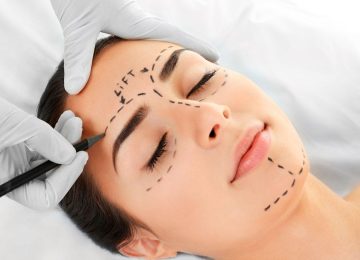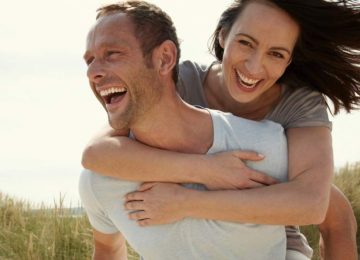Human sexuality is conditioned by each of the experiences we go through in our life, such as prejudices, expectations, self-knowledge of our body, disappointments, first relationships and cultural context.
All this information we receive will allow in one way or another that “sexual self” to evolve and be nurtured, which is reflected in our sexual life.
The human body is perfect and responds to each stimulus in a sequential and defined way by stages that can be expressed in different ways in men and women.
These stages are produced by a series of psychophysiological changes and are what sexologists call the human sexual response.
Put this way, it sounds very cold to analyze everything that two people feel when they have sex, which is the moment where chemistry, pleasure and desire of souls and bodies merge.
What we know today as the human sexual response, we owe to the restless sexologists William H. Masters and Virginia E. Johnson, who, in the 60’s, were able to illustrate the body’s behavior when feeling pleasure in each of the phases, which would also allow understanding many of the sexual dysfunctions and finding effective solutions.
Let’s talk about the stages in the human sexual response:
1) Desire: it starts in the brain, the main sexual organ of the body, where everything begins; an idea, a thought, a memory, a fantasy, feelings or sensations that awaken the need to seek sexual pleasure. The body moves from a sexually neutral to a receptive or active state.
Occasionally, sexual interest may be diminished for hormonal reasons such as postpartum or menopause or previous negative experiences.
2) Excitement: appears after physical or mental stimulation. The greater the desire, the faster and more intense the arousal, and the lesser the desire, arousal will still occur, but not enough for the cycle to develop.
On a psychological level, pleasurable sensations increase and there are physical changes in both sexes, such as penile turgidity and vaginal lubrication.
3) Plateau: in this stage, the levels of sexual arousal are maintained and increased and it is the preamble to reach orgasm.
4) Orgasm: when arousal is at its most #sinrecato point, orgasm occurs. On a psychic level, there is a sudden drop in sexual psychological tension and, on a physical level, rhythmic contractions of the perineal musculature and sexual organs occur.
At this stage, the man reaches the so-called “point of ejaculatory inevitability”, that is, it’s impossible to stop the emission of semen.
5) Resolution: after orgasm, the body returns to its usual state and a feeling of well-being and relaxation of body and mind is experienced, thanks to the secretion of serotonin.
Men enter a refractory period, where 99.9% fall asleep and, in women, theoretically, this period doesn’t occur, so they are willing to continue sexual activity.
However, in both men and women there are similarities and marked differences in each of these phases, because while the male sexual response occurs in a linear fashion, that of women works like waves, it’s a roller coaster of pleasure.
In both, during arousal, the skin reddens; in the plateau, the sexual flush is highlighted on the face, chest, neck and shoulders; during orgasm, the flush is well defined; and, in resolution, it disappears.
In the arousal stage, the penis is erect; in the plateau, it changes color and has its maximum size; during orgasm, the urethra contracts and ejaculation occurs; and, in resolution, it takes 5 to 30 minutes for the penis to be in a relaxed state.
The testicles increase in size at the plateau, they rise during orgasm while the vas deferens, seminal vesicle and prostate contract. At resolution, normalcy returns in 5 to 30 minutes, but, in the absence of ejaculation, normalcy takes hours.
Cowper’s glands, at arousal, produce seminal fluid that also contains sperm load. On the other hand, at plateau and orgasm, they produce the greatest sperm secretion.
Other sensations experienced by men are erection of the nipples, muscular tension in the thighs and buttocks, accelerated heart rate, increased blood pressure and agitated breathing.
In women, during arousal, the breasts increase in size and, in the resolution stage, return to normal in about 30 minutes, becoming very sensitive.
The clitoris and the labia majora and labia minora increase in size during arousal and, in the plateau and orgasm stage, the clitoris increases 2 or 3 times its size. At resolution, if orgasm occurs, it returns to normal within seconds. But, if it doesn’t occur, it may take hours and it’ll be very sensitive to stimulation.
During arousal, the vagina begins to lubricate, increases in length and size, the cervix rises and shows redness. In the plateau stage, there is greater expansion due to the vessel construction, while, at orgasm, contractions occur. At resolution, this takes seconds, but, if there’s no orgasm, it returns to normal within 30 minutes; the V zone will be sensitive and stimulation will be uncomfortable.
Other things that women experience is the production of mucous secretion from the Bartholin’s glands and, like men, they will also experience muscle tension in the thighs and buttocks, accelerated heart rate, increased blood pressure and faster breathing.
Men and women have a hormonal load of dopamine and testosterone. Dopamine is responsible for romantic love and testosterone for sexual desire. This could unbalance the interests of couples, because men have higher levels of testosterone and women have higher levels of dopamine.
However, despite these differences, the most interesting thing is to understand that sexuality evolves as we learn, mature and face difficulties in order to continue enjoying a free sexuality.
Traducción del español: Catalina Oviedo Brugés
















